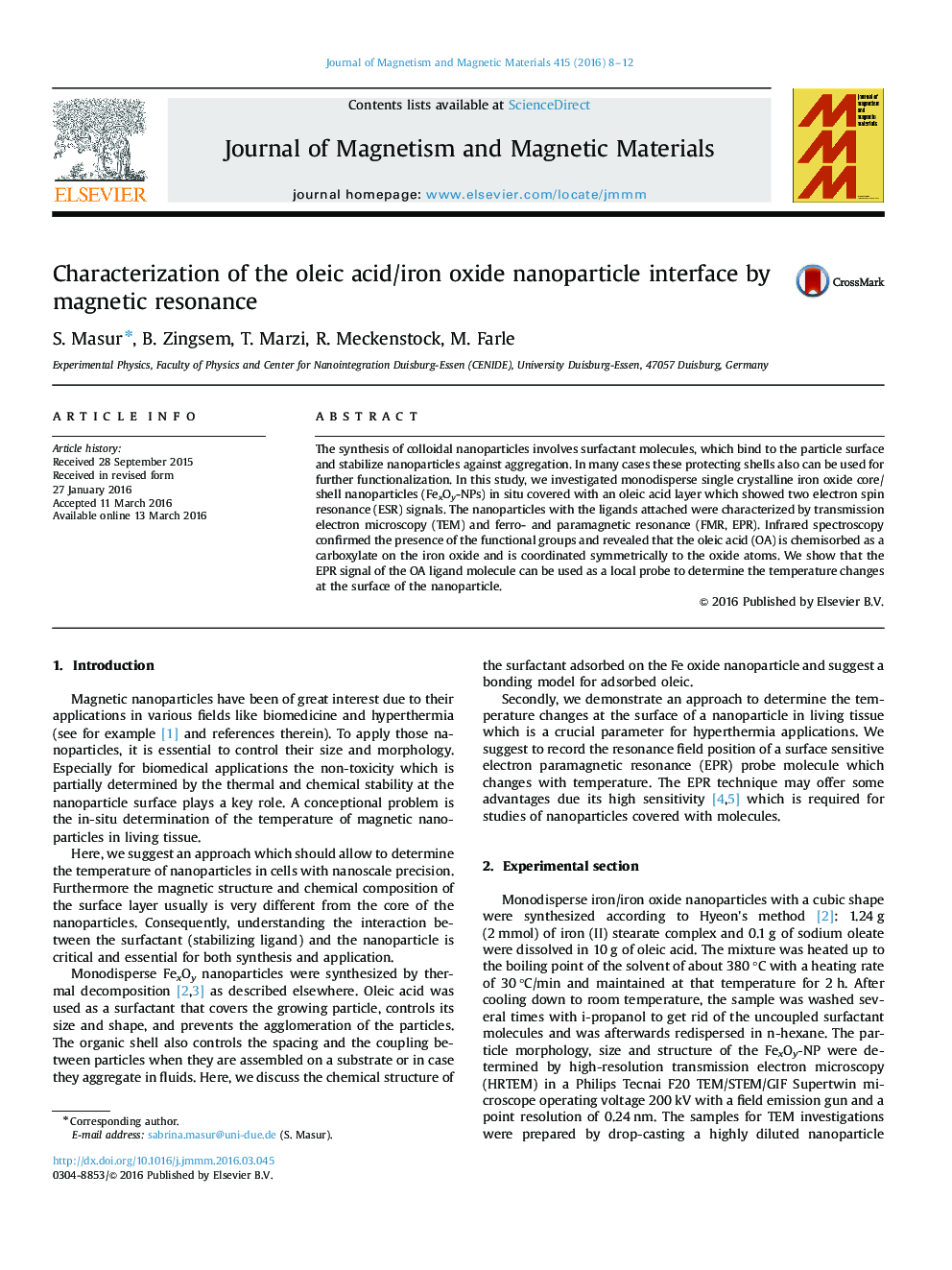| Article ID | Journal | Published Year | Pages | File Type |
|---|---|---|---|---|
| 1797820 | Journal of Magnetism and Magnetic Materials | 2016 | 5 Pages |
•Monodisperse single crystalline iron oxide core/shell nanoparticles (FexOy-NPs) in situ covered with an oleic acid layer two electron spin resonance (ESR) signals.•We show that the EPR signal of the OA ligand molecule can be used as a local probe to determine the temperature changes at the surface of the nanoparticle.
The synthesis of colloidal nanoparticles involves surfactant molecules, which bind to the particle surface and stabilize nanoparticles against aggregation. In many cases these protecting shells also can be used for further functionalization. In this study, we investigated monodisperse single crystalline iron oxide core/shell nanoparticles (FexOy-NPs) in situ covered with an oleic acid layer which showed two electron spin resonance (ESR) signals. The nanoparticles with the ligands attached were characterized by transmission electron microscopy (TEM) and ferro- and paramagnetic resonance (FMR, EPR). Infrared spectroscopy confirmed the presence of the functional groups and revealed that the oleic acid (OA) is chemisorbed as a carboxylate on the iron oxide and is coordinated symmetrically to the oxide atoms. We show that the EPR signal of the OA ligand molecule can be used as a local probe to determine the temperature changes at the surface of the nanoparticle.
